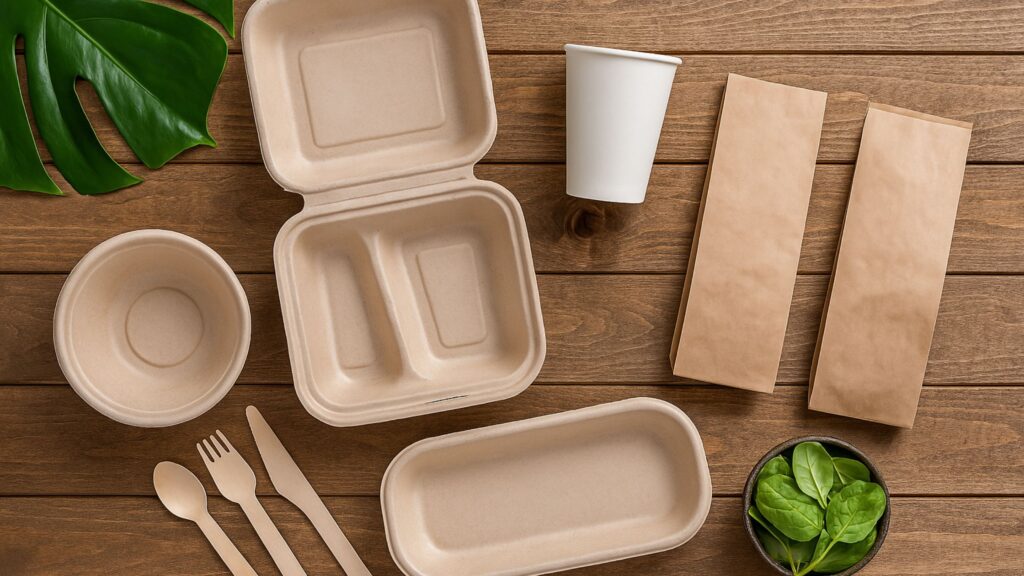In today’s world, sustainability is more important than ever. With growing concerns about plastic waste and environmental pollution, businesses and consumers alike are seeking eco-friendly alternatives. One such solution gaining widespread attention is biodegradable food packaging. This innovative approach offers a sustainable way to package food while minimizing the harmful impact on our planet.
What is Biodegradable Food Packaging?
Biodegradable food packaging refers to materials that break down naturally in the environment without leaving harmful residues. Unlike traditional plastic packaging, which can take hundreds of years to decompose, biodegradable materials degrade within months or years, depending on the conditions. These packaging solutions are often made from renewable resources such as:
- Plant-based plastics (PLA) – Derived from corn starch or sugarcane, these plastics decompose faster than petroleum-based plastics.
- Bagasse – A byproduct of sugarcane processing, bagasse is used to make sturdy, compostable containers.
- Mushroom packaging – Created using mycelium (the root structure of mushrooms), this material is biodegradable and compostable.
- Paper and cardboard – Sourced from recycled paper or sustainably managed forests, these options break down quickly and are easy to recycle.
- Seaweed-based packaging – An emerging innovation, seaweed-based materials offer an edible and biodegradable solution.
Benefits of Biodegradable Food Packaging
Switching to biodegradable food packaging offers numerous advantages, including:
- Environmental Protection – Reduces plastic waste and pollution, contributing to cleaner oceans and landfills.
- Sustainability – Made from renewable resources, minimizing reliance on fossil fuels.
- Reduced Carbon Footprint – Many biodegradable materials have a lower carbon footprint compared to traditional plastics.
- Safe and Non-Toxic – Free from harmful chemicals found in some conventional packaging materials.
- Consumer Appeal – With increasing environmental awareness, eco-conscious consumers prefer brands that use sustainable packaging.
Challenges and Considerations
Despite its benefits, biodegradable food packaging also presents some challenges:
- Cost – Often more expensive than traditional plastic packaging.
- Composting Infrastructure – Not all regions have the facilities to process biodegradable materials effectively.
- Durability – Some biodegradable materials may not be as durable as plastic, requiring careful handling.
The Future of Biodegradable Food Packaging
As technology advances, the development of more durable and cost-effective biodegradable packaging options is on the rise. Companies are investing in research to improve compostability, enhance durability, and create new sustainable materials. Governments worldwide are also introducing regulations to promote eco-friendly packaging solutions, further driving the shift towards sustainability.
Conclusion
Biodegradable food packaging represents a crucial step toward a more sustainable future. By choosing packaging solutions that break down naturally, businesses and consumers can help reduce plastic pollution and support environmental conservation. As awareness grows and technology advances, biodegradable food packaging will likely become the standard, paving the way for a greener, cleaner planet.
Are you ready to make the switch? Consider adopting biodegradable food packaging and be a part of the solution for a more sustainable world.
Related Articles
- Eco Friendly Food Packaging: A Sustainable Choice for the Future
- Tissue Paper Packaging: The Eco-Friendly & Elegant Solution
- The Importance of Bakery Packaging: Enhancing Freshness and Branding
- Gift Packaging: Making Every Present Special
- Jewelry Packaging: Elevate Your Brand and Unbox Elegance
- The Ultimate Guide to Packaging for Small Business Success
- Chocolate Box Packaging: A Perfect Blend of Aesthetics and Functionality
- Paper Box Packaging: Benefits, Uses, and Sustainability
- Cookie Box Packaging: Design Tips & Best Practices
- The Art of Chocolate Packaging: More Than Just a Wrapper

